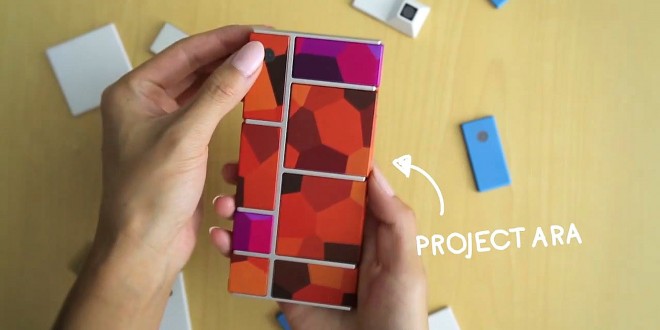Project Ara is one of Google’s more recent projects, with hints to an online viral video depicting “blocks” which make up a phone that you won’t have to throw away when a a part is damaged or when you would like to upgrade certain features. Project Ara has been in the works for quite some time now, with Google working on smartphone modules that can be interchangeable. With Project Ara, a user will be able to build their own phones using the modules certain OEMs will be providing and create a device perfect for their needs.
Project Ara focuses on a multi-purpose system which allows you to choose what kind of parts your phone will have, ranging from CPU, camera, screen to storage, RAM and ports. All of the parts would be individually made, meaning that you could swap them out whenever one of the parts breaks or when you would like to upgrade your camera or your CPU. You can only imagine that while Project Ara seems like a budget-friendly and innovative concept, there would be issues with OEMs taking on partnerships and manufacturing modules that would be compatible with each other.
Nonetheless, Project Ara is moving forward and new information points toward the fact that the modules which will be used in Project Ara will be hot-swappable. That means that whenever you want to swap out a module, with the exception of the CPU and display, you will be able to do so without turning off your phone. If the modules on Project Ara will indeed be hot-swappable, the phone would be easy to customize and you could experiment with different modules real-time, without having to wait for your phone to turn off and on back again.
Project Ara will be on display at an upcoming developer conference in December via functional prototype that should be a clear suggestion that the rumored early 2015 release of the project is indeed a likely outcome of Google’s endeavors. Project Ara will probably get its own store, since OEMs will have to be on board with the manufacturing, rather than be sold in the Play Store like Nexus devices from Google. We don’t have any information on how much each type of module will cost, but we suppose that it will be worth it no matter what the price, since you will only have to buy the whole package once, then modify it over time according to your own preferences.
Project Ara will probably run a modified version of Android L (Lollipop, most likely) developed with the help of the Linaro non-profit organization and the OS is one of the key ingredients that has made hot-swapping of Project Ara modules possible. I’m truly excited about Project Ara and I’m looking forward to building my own phones with modules that will suit my needs perfectly. I really enjoy the concept and I hope Google’s endeavor will catch on and be as popular as its Nexus line.
 Load the Game Video Games, Reviews, Game News, Game Reviews & Game Video Trailers
Load the Game Video Games, Reviews, Game News, Game Reviews & Game Video Trailers


